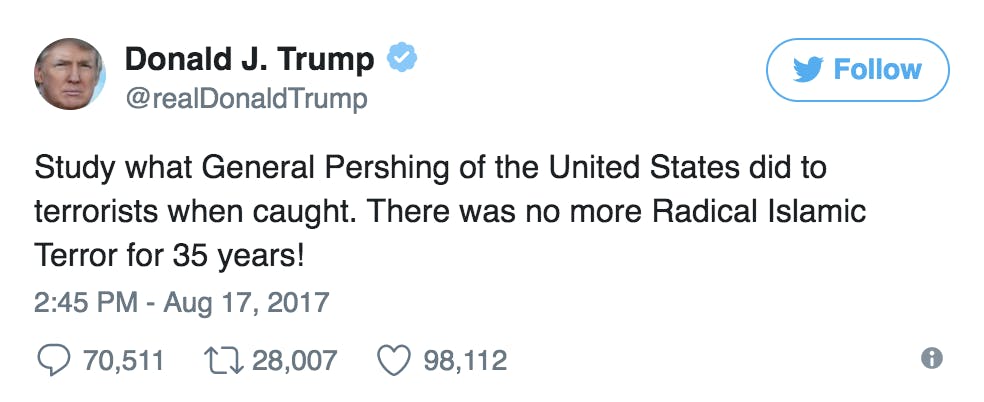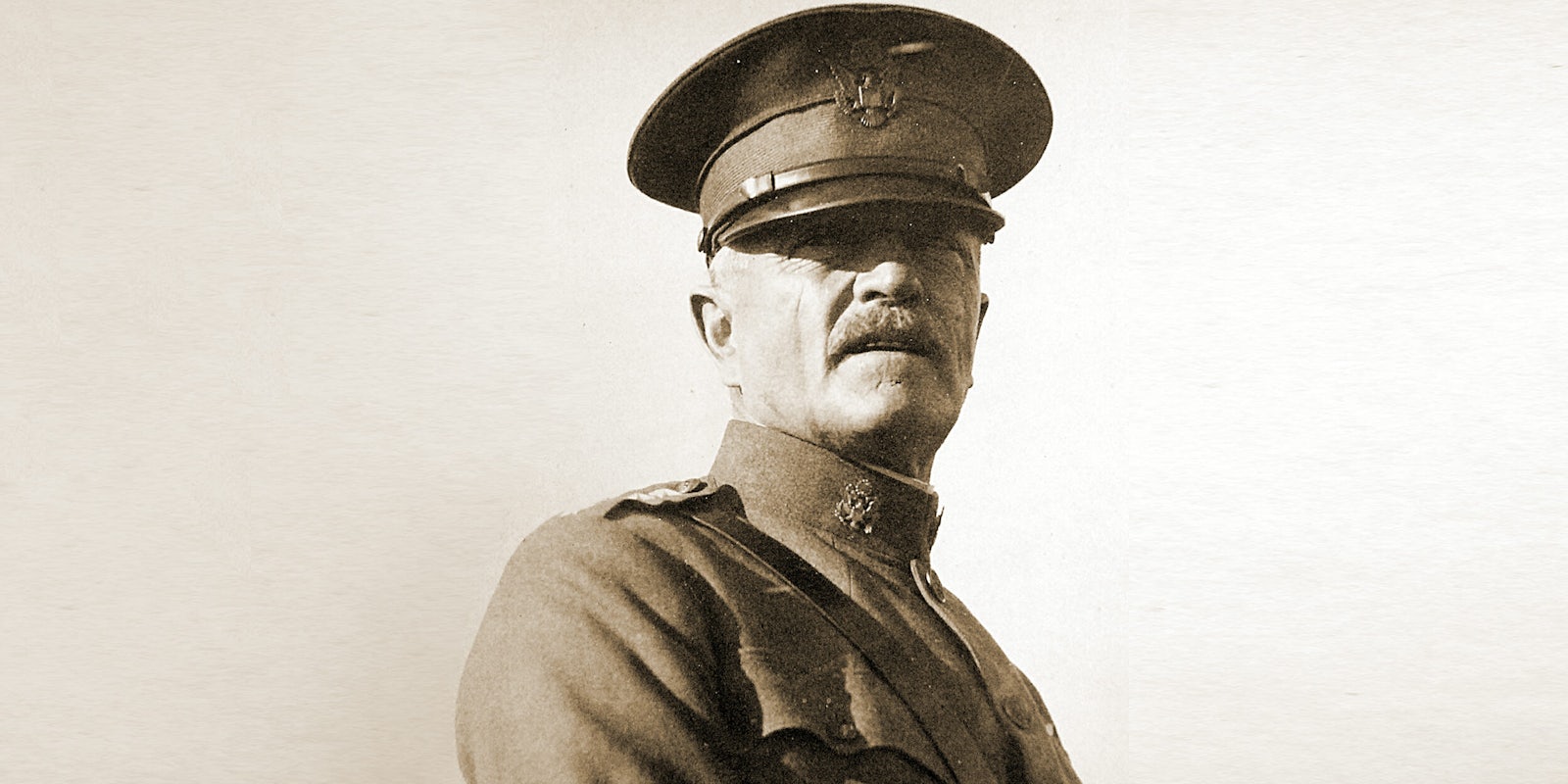The legend of how Gen. John J. Pershing dealt with Muslim insurgents during World War I is a favorite of President Donald Trump’s. The problem is, historians doubt it actually happened.
Trump, in the wake of Thursday’s terrorist attacks in Barcelona that killed 13 people, tweeted at his followers to “study what General Pershing of the United States did to terrorists when caught.” He added that Pershing’s actions were effective enough to stop Islamic terrorism in the region for more than three decades.

The president’s admiration for the legend of Gen. Pershing sits at the intersection of two of his interests: A strong military and conspiracy theories. Here’s a quick rundown of why Trump’s favorite tale of military might is simply made-up.
Who is Gen. Pershing?
What exactly did Gen. Pershing do to Muslim insurgents? The legendary general lead the United States occupation of the Philippines in the early 1900s, which was met with resistance by the country’s Muslim minority population, known as the Moros. Pershing’s response to the U.S. fight against the Moros has since become the stuff of legend.
Did Gen. Pershing really shoot Muslims with bullets covered in pig’s blood?
As the myth goes, Pershing ordered his troops to shoot the Muslim combatants with bullets laced with pig’s blood. Since Islam forbids its followers from consuming pork, such a tactic was thought to be effective in curbing potential attacks from the Moros.
The Daily Dot reached out to Professor John Morrow, chair of the history department at the University of Georgia and author of a comprehensive history of World War I, The Great War: An Imperial History.
In an email to the Daily Dot, Morrow called the Pershing tale recounted by Trump “one of the dumbest damn anecdotes” he had ever heard.
“None of it is true. The very notion that someone could have quelled a Muslim insurgency with a stunt like that is absurd and appeals only to people who propose simplistic solutions to complex problems,” wrote Morrow.
Is there any reason why Gen. Pershing may have pursued the pigs’-blood tactic?
No. In fact, such a tactic may have inflamed the Muslim insurgency. Morrow points to the Sepoy Mutiny in 1857, when Indian soldiers rebelled against British authorities in one of the bloodiest battles in the region. The pre-greased paper cartridges of weapons given to Indian soldiers—both Muslims and Hindus—forced to serve in the British Army were rumored to use animal fat. Rather than “bite the bullet” and come into contact with cow or pork fat, the Indians rose up against the British occupation.
Professor Barney McCoy of the University of Nebraska–Lincoln, who produced a documentary on Pershing, also doubts the rumor.
“I have found no evidence to support the pig’s blood story told by Trump on the campaign trail, or others in print, social media and on the web in the past several years,” wrote McCoy on his blog.
However, Pershing did mention that U.S. soldiers had adopted the practice of burying Muslim insurgents with pigs in his autobiography. But the tactic did not work for long.
Professor Donald Smythe, author of Guerrilla Warrior: The Early Life of John J. Pershing, noted as such in his biography of the general.
“Hugh L. Scott, who had been governor of Sulu (another Philippine province), noted that when one of his predecessors buried pigs with juramentados the only people who got angry were some humanitarians in the United States,” Smythe wrote. “The Moros? They ‘did not care enough about it to even discuss it among themselves.’”
It’s not the first time Trump relayed the false legend. Trump often told the tale of Pershing and his mythical pig’s-blood bullets on the campaign trail, as you can see below:
No matter how many times he tells the tale, however, it remains entirely false.


